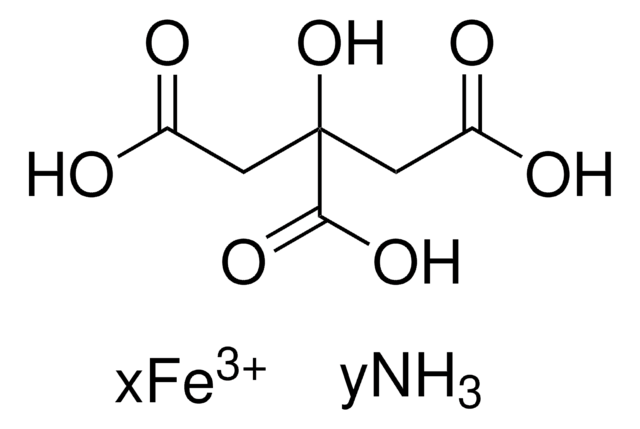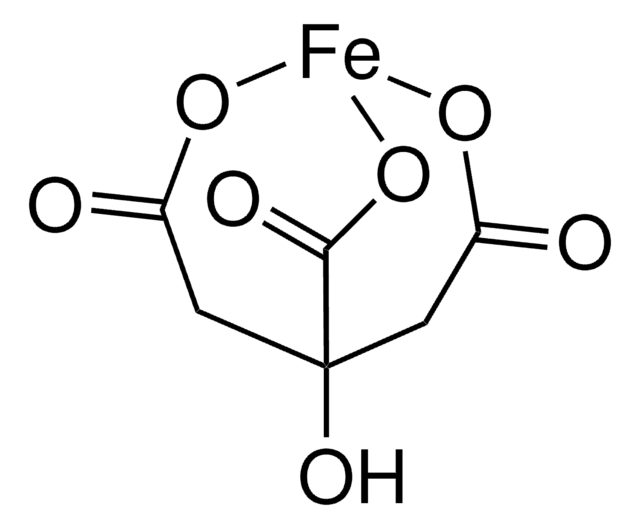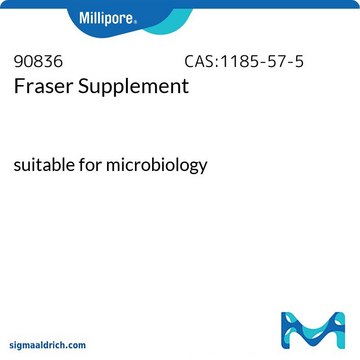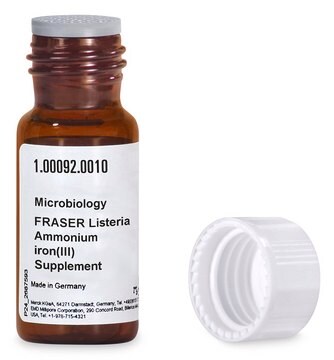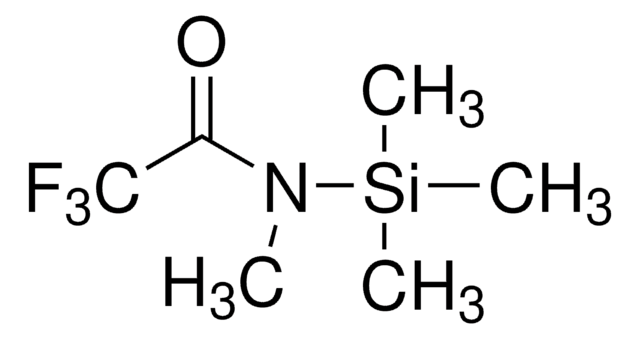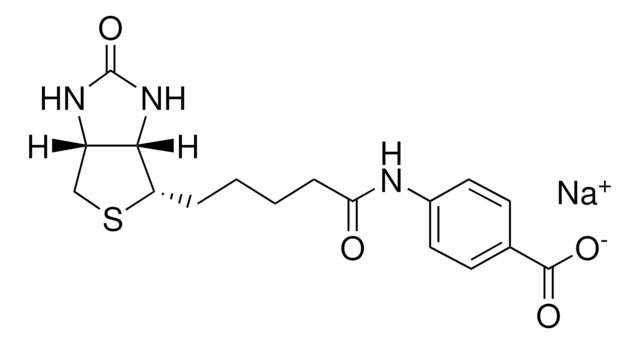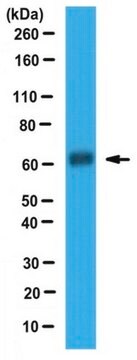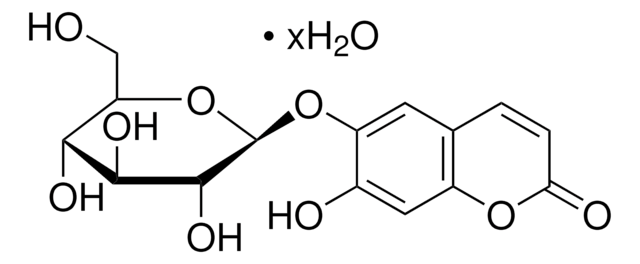F5879
Ammonium iron(III) citrate
reagent grade, powder
Sinonimo/i:
Ammonium ferric citrate, Ferric ammonium citrate
Autenticatiper visualizzare i prezzi riservati alla tua organizzazione & contrattuali
About This Item
Prodotti consigliati
Grado
reagent grade
Stato
powder
Composizione
Iron, 16.5-18.5%
Cationi in tracce
Fe: 16.5-18.5%
Stringa SMILE
N.OC12CC(=O)O[Fe](OC(=O)C1)OC(=O)C2
InChI
1S/C6H8O7.Fe.H3N/c7-3(8)1-6(13,5(11)12)2-4(9)10;;/h13H,1-2H2,(H,7,8)(H,9,10)(H,11,12);;1H3/q;+3;/p-3
FRHBOQMZUOWXQL-UHFFFAOYSA-K
Cerchi prodotti simili? Visita Guida al confronto tra prodotti
Descrizione generale
Ammonium iron(III)citrate can be used as a reagent and iron precursor in several organic reactions and Fe3O4-based nanomaterial preparation. It can be prepared by treating Fe(OH)3 with citric acid and NH4OH in various ratios.
Applicazioni
Ammonium iron(III) citrate can be used as a reagent to prepare amphiphilic siderophore iron acinetoferrin complex from acinetoferrin in the presence of HEPES (4-(2-hydroxyethyl)-1-piperazineethanesulfonic acid) buffer. It can also be used as an iron precursor to prepare Fe3O4-carbon dots magnetic-fluorescent hybrid nanoparticles.
Codice della classe di stoccaggio
11 - Combustible Solids
Classe di pericolosità dell'acqua (WGK)
WGK 1
Punto d’infiammabilità (°F)
Not applicable
Punto d’infiammabilità (°C)
Not applicable
Scegli una delle versioni più recenti:
Possiedi già questo prodotto?
I documenti relativi ai prodotti acquistati recentemente sono disponibili nell’Archivio dei documenti.
I clienti hanno visto anche
Pengfei Wang et al.
Science advances, 5(4), eaau8038-eaau8038 (2019-04-17)
The in situ measurement of the distribution of biomolecules inside a cell is one of the important goals in life science. Among various imaging techniques, magnetic imaging (MI) based on the nitrogen-vacancy (NV) center in diamond provides a powerful tool
Sant-Rayn Pasricha et al.
Nature communications, 8(1), 403-403 (2017-09-03)
Hepcidin regulates systemic iron homeostasis. Suppression of hepcidin expression occurs physiologically in iron deficiency and increased erythropoiesis but is pathologic in thalassemia and hemochromatosis. Here we show that epigenetic events govern hepcidin expression. Erythropoiesis and iron deficiency suppress hepcidin via
Yinghui Zhang et al.
Antioxidants & redox signaling, 13(7), 999-1009 (2010-04-22)
Cytosolic ferritins sequester and store iron, consequently protecting cells against iron-mediated free radical damage. However, the mechanisms of iron exit from the ferritin cage and reutilization are largely unknown. In a previous study, we found that mitochondrial ferritin (MtFt) expression
Rita Polati et al.
Journal of proteomics, 76 Spec No., 10-27 (2012-07-28)
Macrophages play a critical role at the crossroad between iron metabolism and immunity, being able to store and recycle iron derived from the phagocytosis of senescent erythrocytes. The way by which macrophages manage non-heme iron at physiological concentration is still
Yulia Pollak et al.
Journal of neural transmission (Vienna, Austria : 1996), 120(1), 37-48 (2012-03-27)
Iron accumulation and iron-related oxidative stress are involved in several pathological conditions and provide a rationale for the development of iron chelators as novel promising therapeutic strategies. Thus, we have recently synthesized multifunctional non-toxic, brain permeable iron chelating compounds, M30
Il team dei nostri ricercatori vanta grande esperienza in tutte le aree della ricerca quali Life Science, scienza dei materiali, sintesi chimica, cromatografia, discipline analitiche, ecc..
Contatta l'Assistenza Tecnica.